The shattering heat records in Barcelona and other parts of Catalonia this summer, have created an opportunity for many travelers to make an exodus to the cooler northern region of Spain known as Asturias. Gijón, a spirited maritime city in this upper dominion, is known for its colorful vintage buildings and zigzag-patterned streets lined with tapas bars and cider houses. The sea-scrubbed architecture, with remnants from an earlier Roman and Moorish presence, enticed this mid-August visitor to linger over an iced bebida in a tree-shaded plaza for hours.
(The city of Gijón came to prominence as a home for fishermen. Its thriving seaport, Puerto del Musel, has become an international port of call.)
Situated on the coast of the Cantabrian Sea, this midsize city in the Bay of Biscay, shoulders up against the wide “W” of two inlets, one purposed mostly for fishing and recreational boats, the other for swimming and surfing at the crescent-shaped San Lorenzo beach. The popular all-year pastime of strolling and people gazing, takes place along the wide oceanic promenade known as El Muro.
Nothing could be more exhilarating than to lean onto the guardrail overlooking the gentle white caps below, and becoming instantly ensconced in the briny sea breezes. Close your eyes and take in a deep breath of the ancient Asturian mythology embedded in the saltwater and imagine that you’re surrounded by a gentle tribe of Cantabrian sea nymphs.
One of the best health tonics in Gijón is to bathe in this soft sea-wind and allow yourself the delicious prickle of goosebumps upon your neck, shoulder blades, and legs. Just ten minutes in this constant air flow will dispel any memory of Barcelona’s urban furnace—a singed cityscape, which this season is mostly absent of green plazas and active fountains.
(The soft sandy shoreline of the San Lorenzo beach stretches nearly three kilometers from the church of San Pedro to the Mayán de Tierra.)
My friend Nuria, a native gijonés herself, introduced me to this cooling beachside remedy, along with some of the best gastronomic pleasures in coastal Asturias. Food in Gijón is meant to be discovered, savored and celebrated in generous portions and if you’re a seafood fanatic, this is most definitely the place to indulge.
Certainly no trip here is complete without a sip (or many sips of) the local cider, which is traditionally poured from above one’s head into a delicate thin glass. There is no hesitation in drinking up the soft apple-based liquid once it’s set free from the bottle. Our dining experience at the local cider house was highlighted with a pastel de cabracho—a sort of “fish pudding” made from the delicate Scorpion fish, mixed with garlic, shallots, tomato cream, and other special ingredients—(it tastes like a lighter version of fish roe served on thin toasts), then a serving of pan-fried calamari and to finish up, a tarta gijonesa—named after the city itself—the perfect sweet cake to end on.
(Discover the Ensaladilla rusa, or Russian salad, the Asturian version of an internationally popular potato salad infused with boiled eggs, tuna and a bit of mayonnaise. Perfectly refreshing for a summer side dish.)
After an enormously portioned supper, it’s customary to join the evening strollers as they make their way along the shoreline. A nighttime pilgrimage to the Monument to the Emigrant’s Mother is a must for any first time visitor. Arms extended outward, hair tussled by constant wind gusts, the bird-frail body of la madre del emigrante, also known as la muyerona, mourns her lost children and keeps vigil for them near a wide circle of breakers along the coastline. This dark bronze sculpture completed in 1970 by artist Ramon Muriedas, is an homage to worldwide Asturian emigration.
(Her hand extended as if waving goodbye, the emigrant’s mother waits for her lost children who are suffering extreme exposure to the Cantabrian Sea. Situated at Paseo del Rinconín, the monument is a tribute for all mothers of migrants here in Gijón.)
As I happened to be visiting during the festive Semana Grande, with numerous bands and musicians playing for free in open spaces around the city, Nuria and I both felt compelled to attend the concert offered by the famous Flamenco/Copla singer known to the world as Falete. His dramatic gowns and exaggerated gestures are a powerful compliment to his penetrating and stirring range. With vocals inflected with the influence of Chavela Vargas and Rocio Jurado, his flamboyant stage presence reflects a commitment to the Flamenco tradition. Responding to ovation demands from the audience, he effortlessly commanded an overflowing crowd at the immense Plaza Mayor, where he ended a mesmerizing set of songs with his unique Spanish version of the classic “My Way.”
(With standing room only, I managed to snap a photo from the back of the plaza. Falete took to the main stage to weave a spell of seductive Flamenco songs from his captivating repertoire.)
The heady sea gusts that saturate the environs of the city, left me just slightly intoxicated during my four day sojourn. I wanted to saunter around its cobblestoned pathways for at least another week, so I’ve vowed to return in the spring of next year to feed my current infatuation.
Nuria, a seasoned spontaneous traveler herself, offered her own method for staying rooted in her own heart centered adventures. She trusts that whenever she is walking a path to any destination, and she feels an inkling to go left instead of right for example, it’s because her intuition is telling her she is meant to take a side trip and that perhaps she is going to encounter an old friend or relative whom she is supposed to cross paths with. She gives herself permission to go “off-course” regularly.
But maybe that’s the way we all might approach any destination, knowing that if we respond to our intuition, we might take on a different expedition, at the spur of a moment perhaps, and end up, well, who knows where?
During my last moments in Asturias, I walked along the broad promenade, taking in the seductive gales coming off the waves, and tried to decipher the ancient tidal rhythms of the Cantabrian Sea. What I discovered is that perhaps el mar is asking all of us in Gijón, to make a habit of pausing to listen more solemnly, to not be so hurried and intent on reaching our intended destination, and simply allow everything to just naturally and spontaneously unfold as it’s meant to.
(In just a matter of a few days, Gijón left me with a desire to return and explore the landscapes of Asturias more intently, with an emphasis on the mountains and rural areas as well.)
Recommended:
For lodging in Gijón, try the three-star Santa Rosa Hotel (C. Santa Rosa, 4); it is within walking distance to the San Lorenzo beach and in the center of the turbulent nightlife. For dining don’t miss La Farola, a cider house or Sidrería as it’s called, known for its hearty fish and traditional meat dishes. For tapas, head over to La Pequeña Vermuteria (C. de las Cruces, 13), for an exquisite dish of croquetas de jamón caseras or boquerones en vinagre.
Creatives will love Boketto (at the corner of Instituto and San Antonio) for an elegantly curated selection of writing journals, pens and crayons, calendars, satchels and artist sketchbooks. After you’ve selected your new agenda, head next door to El Paralelo (C. la Merced, 4), for a sophisticated coffee moment at this jazz-inspired bar, where the table votives are lit from first pour into the nightfall.
(Sweets and savories, wines, beers, and a moment to reflect in your journal with the perfect coffee at a window banquette—this is Paralelo.)
For a day trip, ride the city central bus direct for twenty-five minutes and for the price of a three euro round trip boleto, you’ll discover the enchanting city of Oviedo.
Don’t miss the Gothic style Cathedral of San Salvador. Containing numerous religious relics, the structure took over three centuries to complete and is worth a visit. The city of Oviedo itself is an “open museum” where you’ll encounter world class sculptures crowded throughout the central shopping district. The Campo de San Francisco is a magnificent public park with venerable, sky bound trees that shade its visitors from the broil of the Spanish sun.
Gratitude:
Thanks to my beloved Nuria for being the best friend and travel host one could ever hope for in a magical city like Gijón!




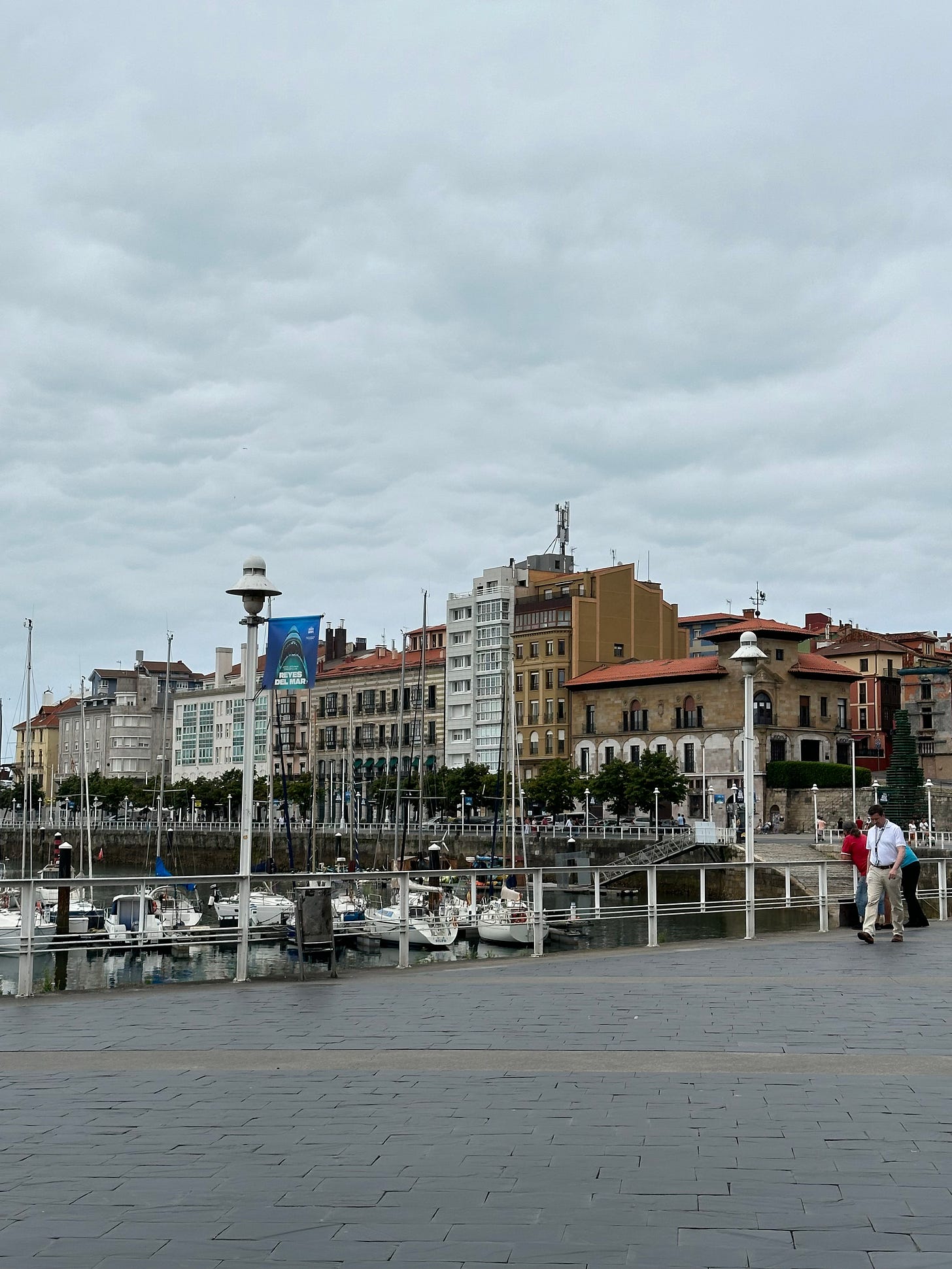
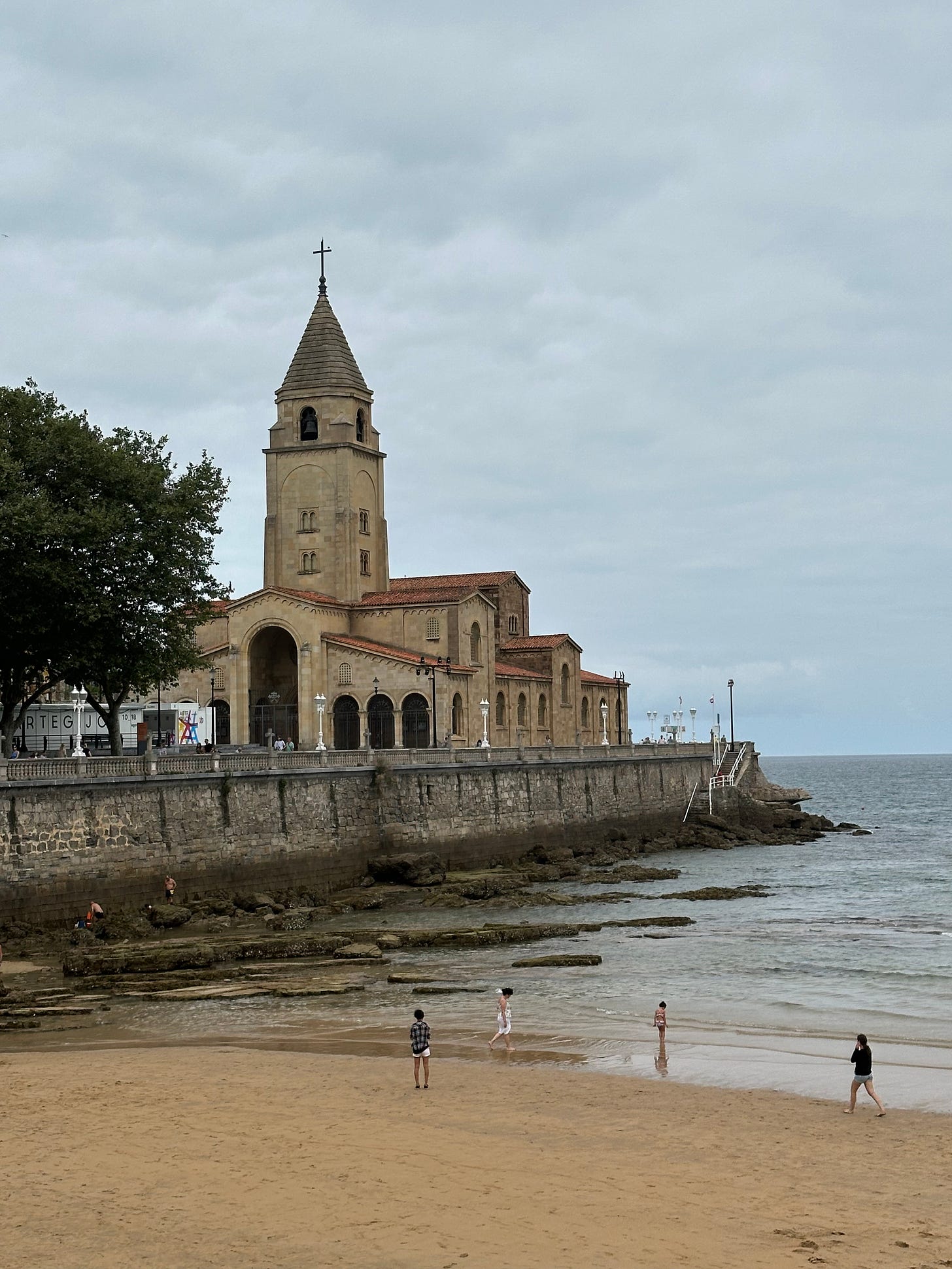


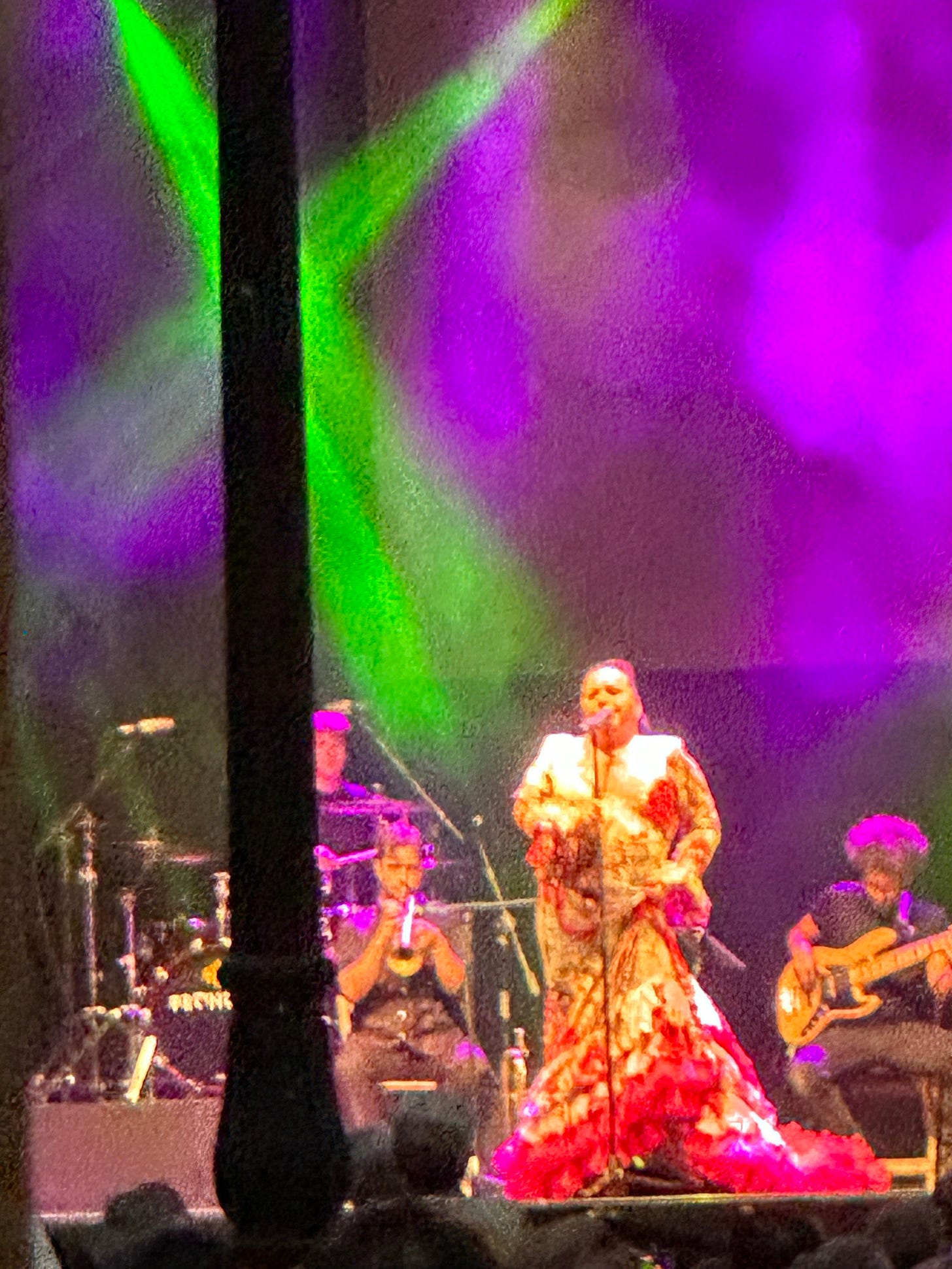
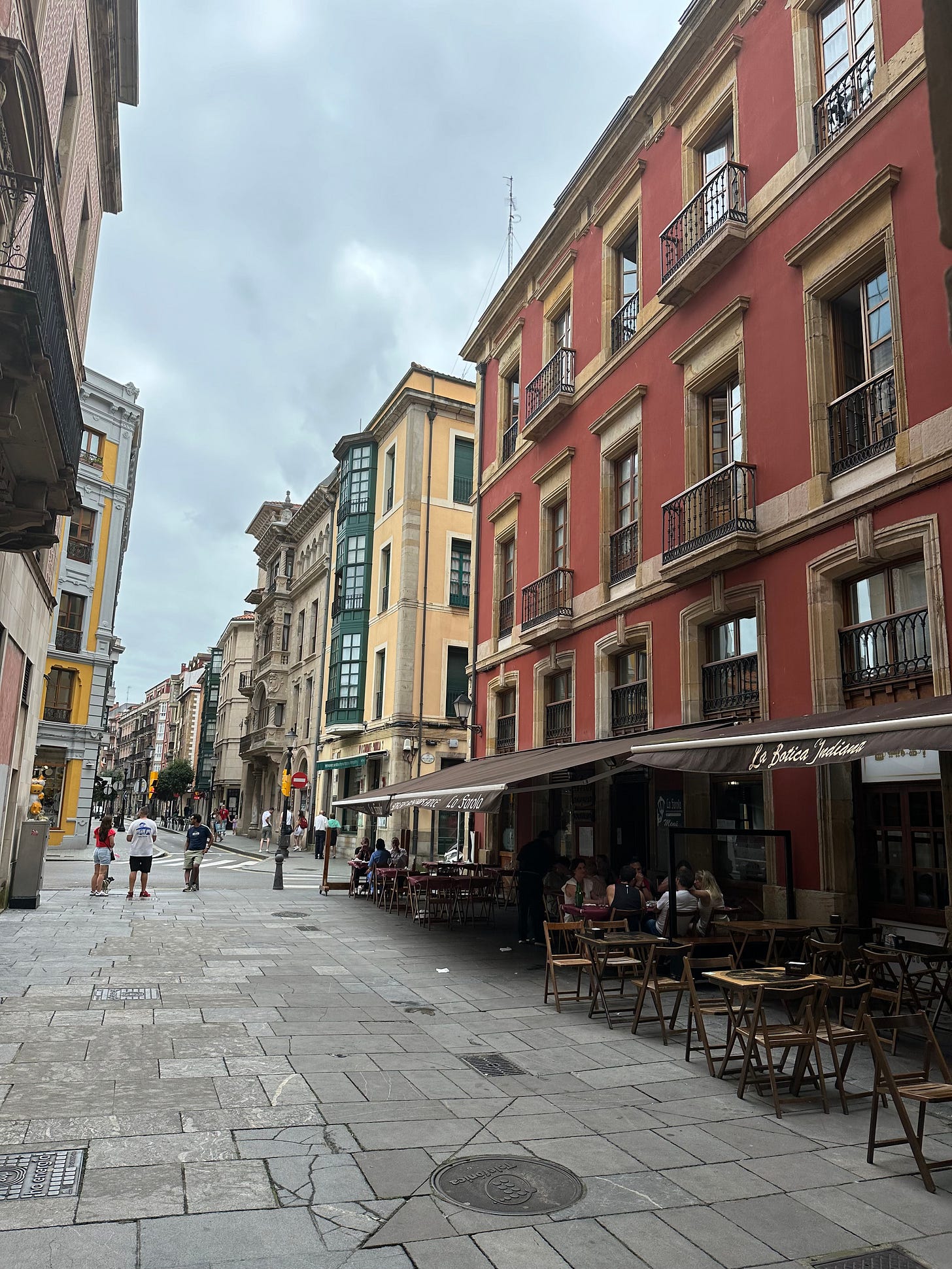
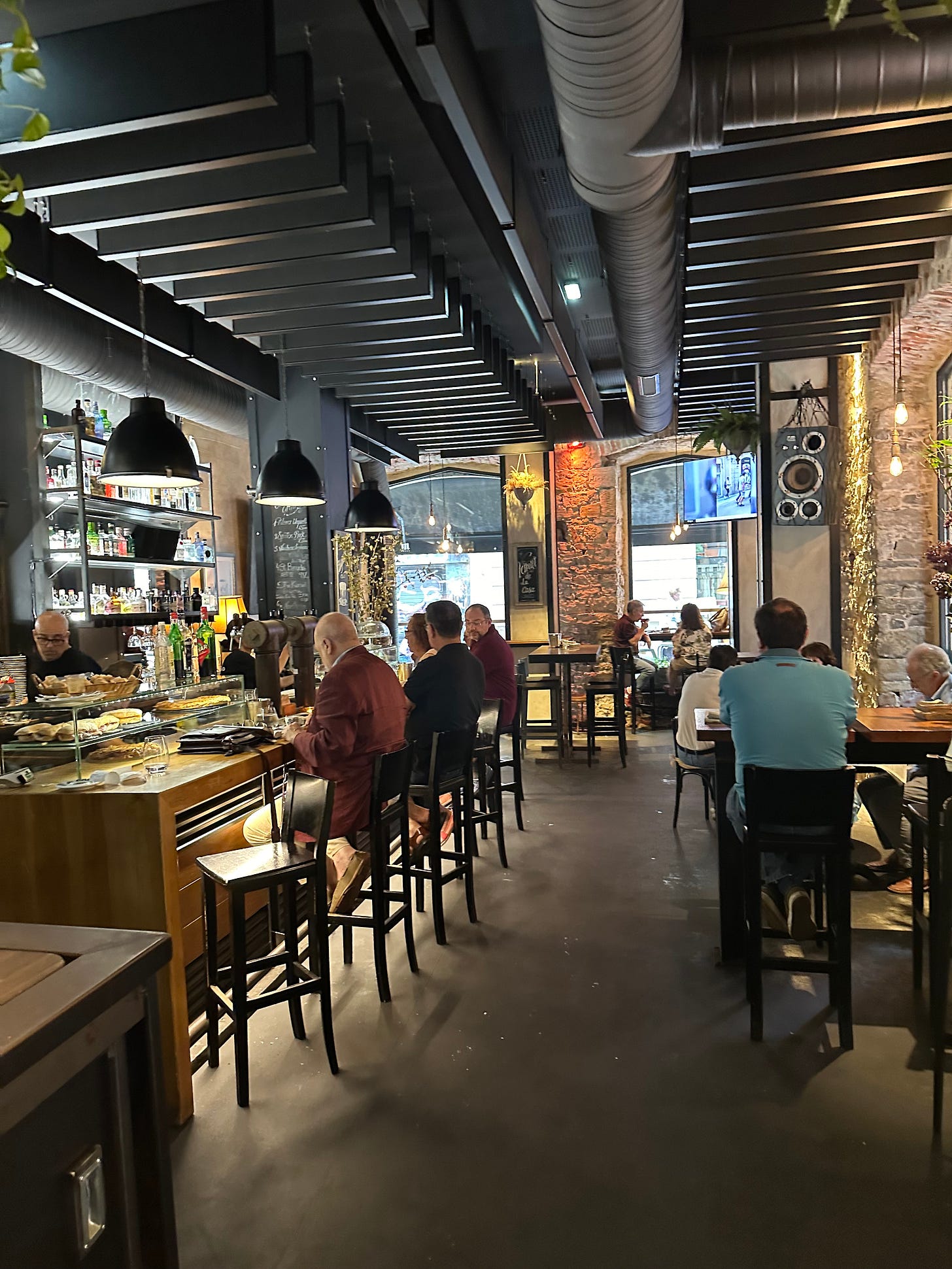
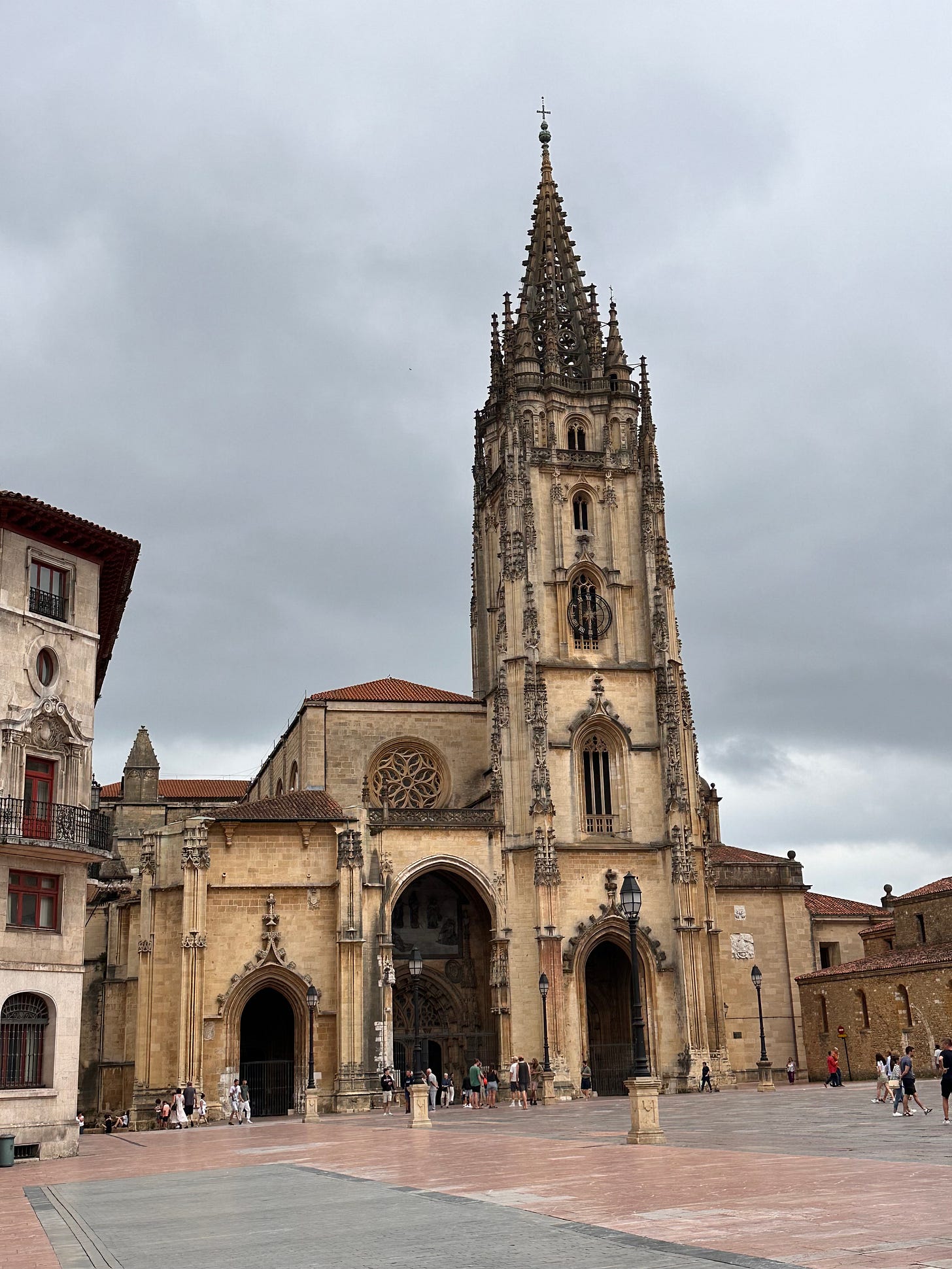
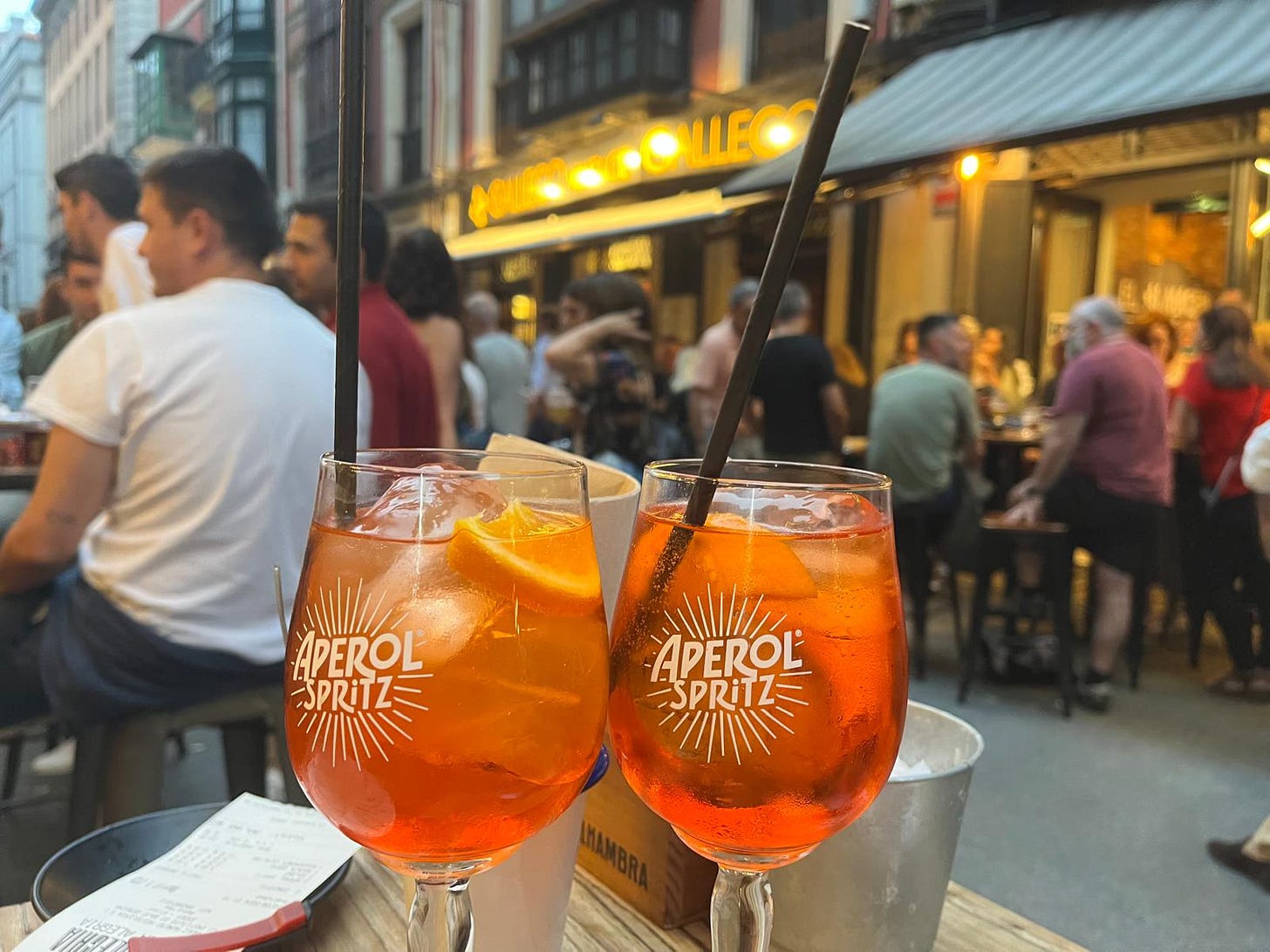
Beth thank you so much for your support here. I really appreciate it. I have to say that one of the reasons I wanted to be in Spain has been to experience more of the sea. When I lived in Poblenou a few years ago, it took me ten minutes to walk to the sea. I would walk the promenade along the beach and take in the beauty of the waves nearly every day. This year, living more centrally as I do in Barcelona, I have not had the chance to have a relationship with the sea. The moment I arrived in Gijón however, all of that changed. I felt instantly transformed by the salty breezes and the presence of the water. Thank you for sharing in my experience at the promenade and for your readership. I so appreciate your kind feedback.
Wow, Gerry. This is such an amazing, beautifully written post about your visit to Gijón. Your words about the sea lulled me into a feeling of relaxation, and your description of every sight and flavor and sound transports me to this city. I love so much about this post. Your description of mouth-watering treats and amazing sights are incredible -- as are the amazing photos.
I especially love this line: "What I discovered is that perhaps el mar is asking all of us in Gijón, to make a habit of pausing to listen more solemnly, to not be so hurried and intent on reaching our intended destination, and simply allow everything to just naturally and spontaneously unfold as it’s meant to." This celebrates the moments to be savored in such an adventure rather than to be rushed through life. And it's clear there is much to be savored in this wonderful gift of a city.
I also enjoy how you point to spontaneous travel as an important component of any travel experience. I admire your friend Nuria's attitude toward following her intuition rather than a to-do list of all what she "should" see. Part of what makes you a distinctive travel writer is your eloquent descriptions, as well as your spontaneity. Thank you for taking the reader on this adventure!